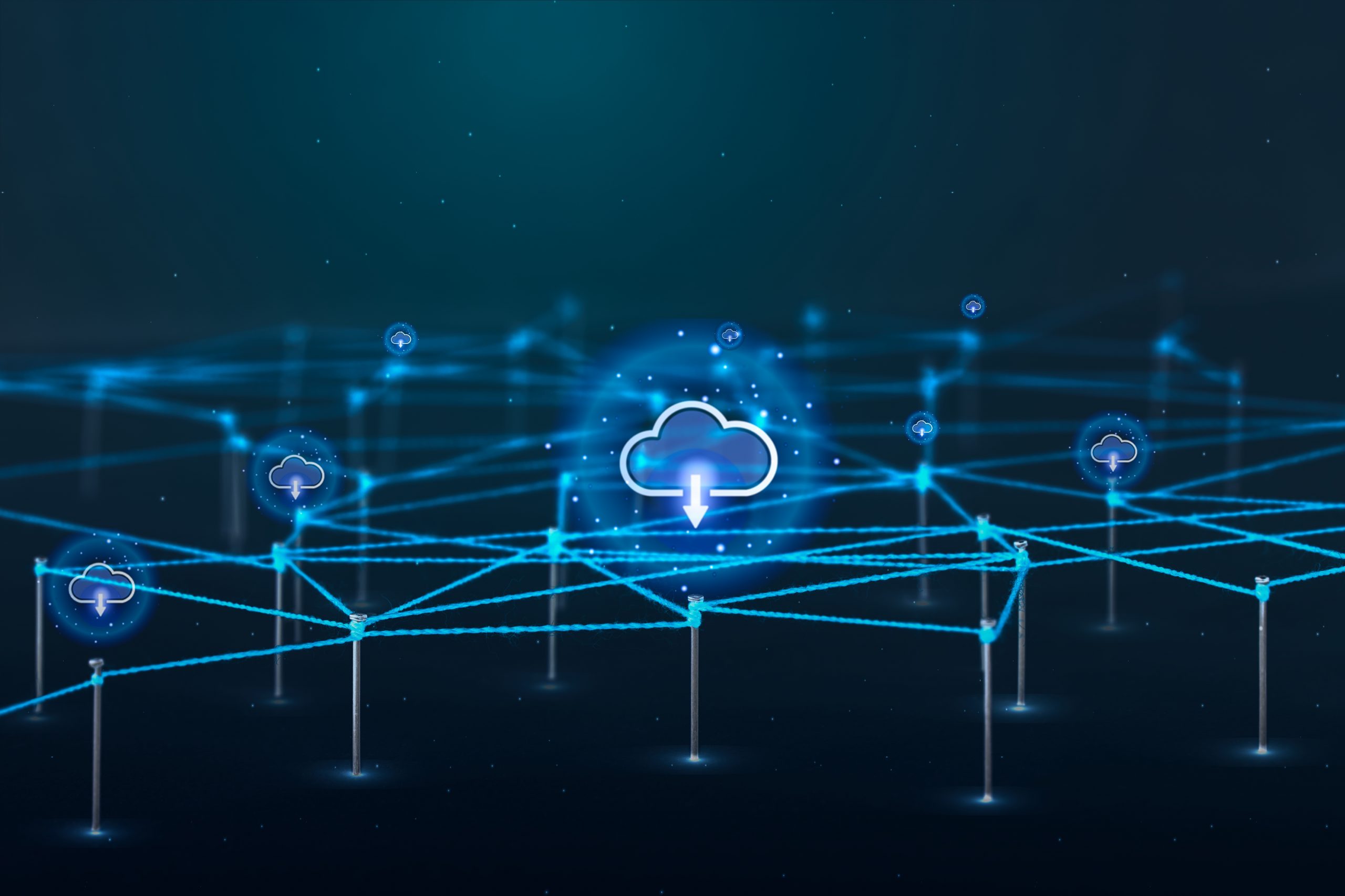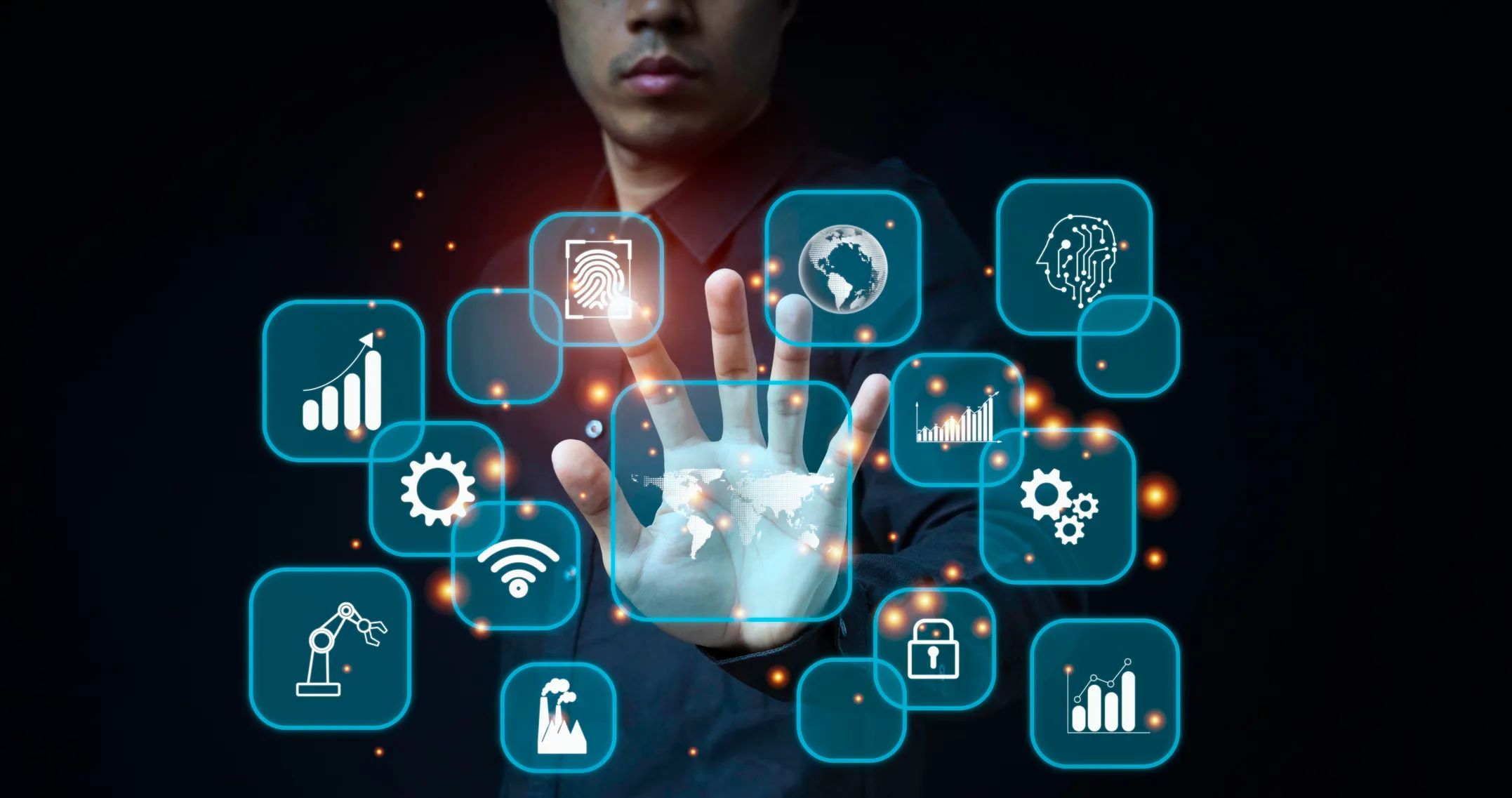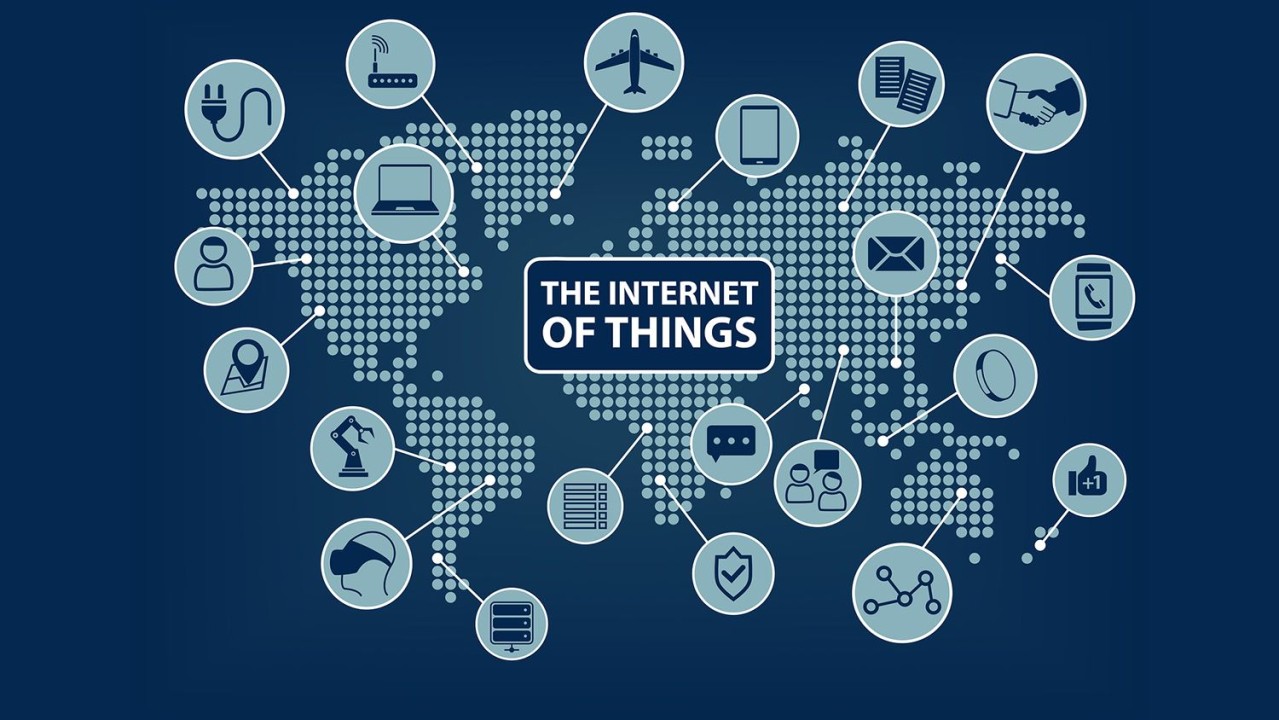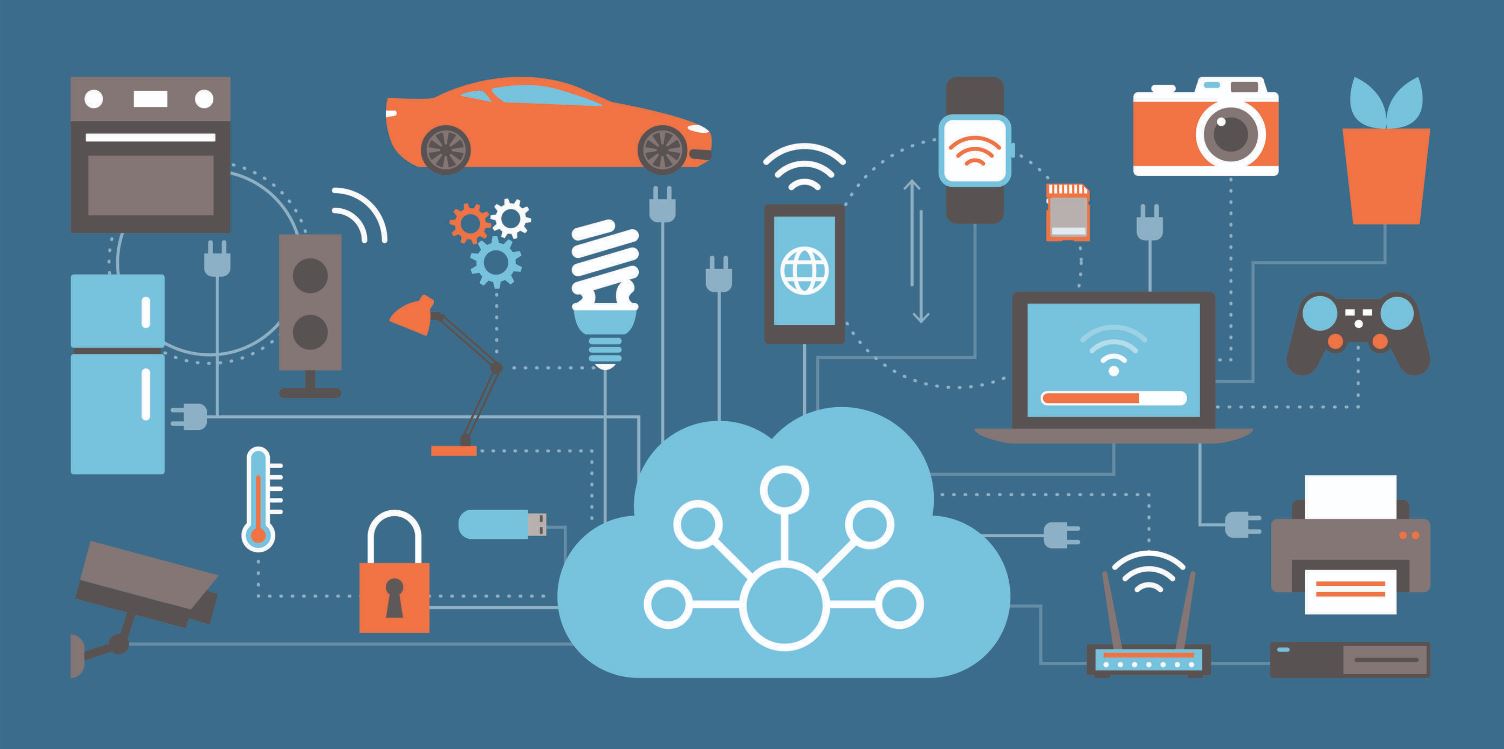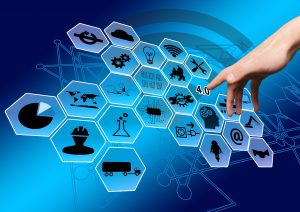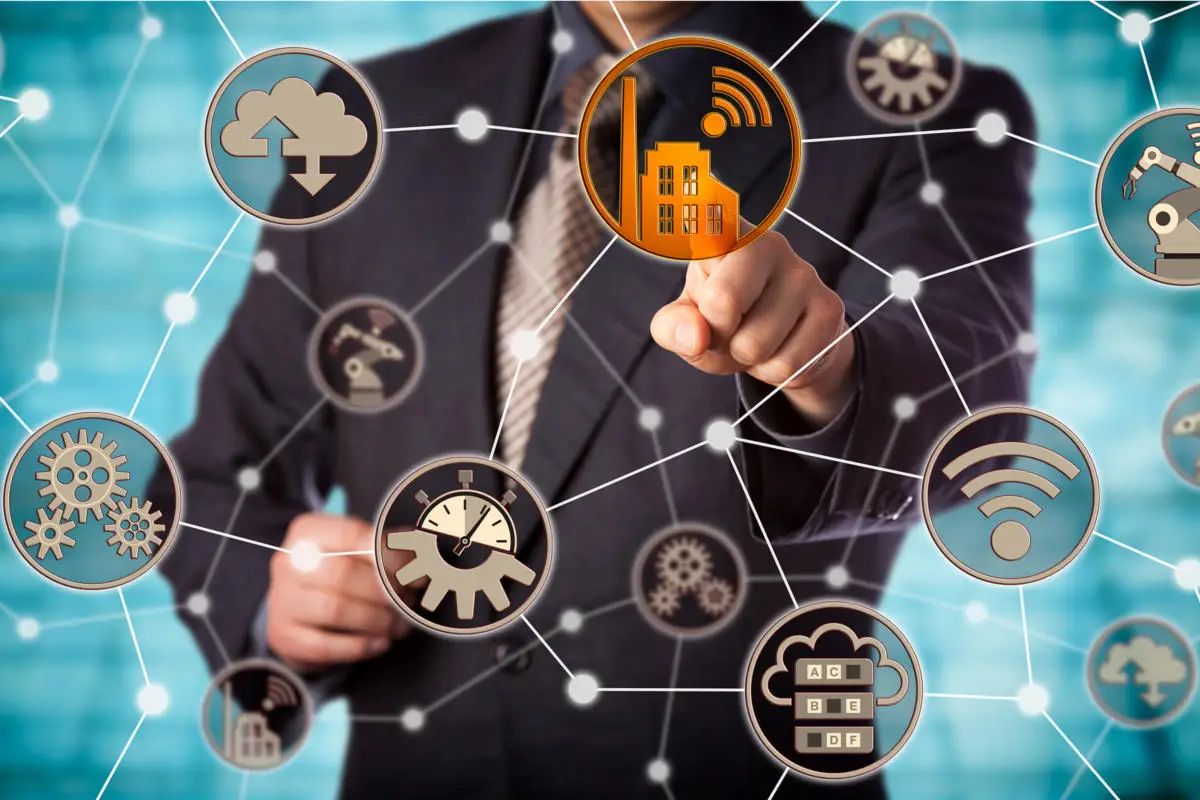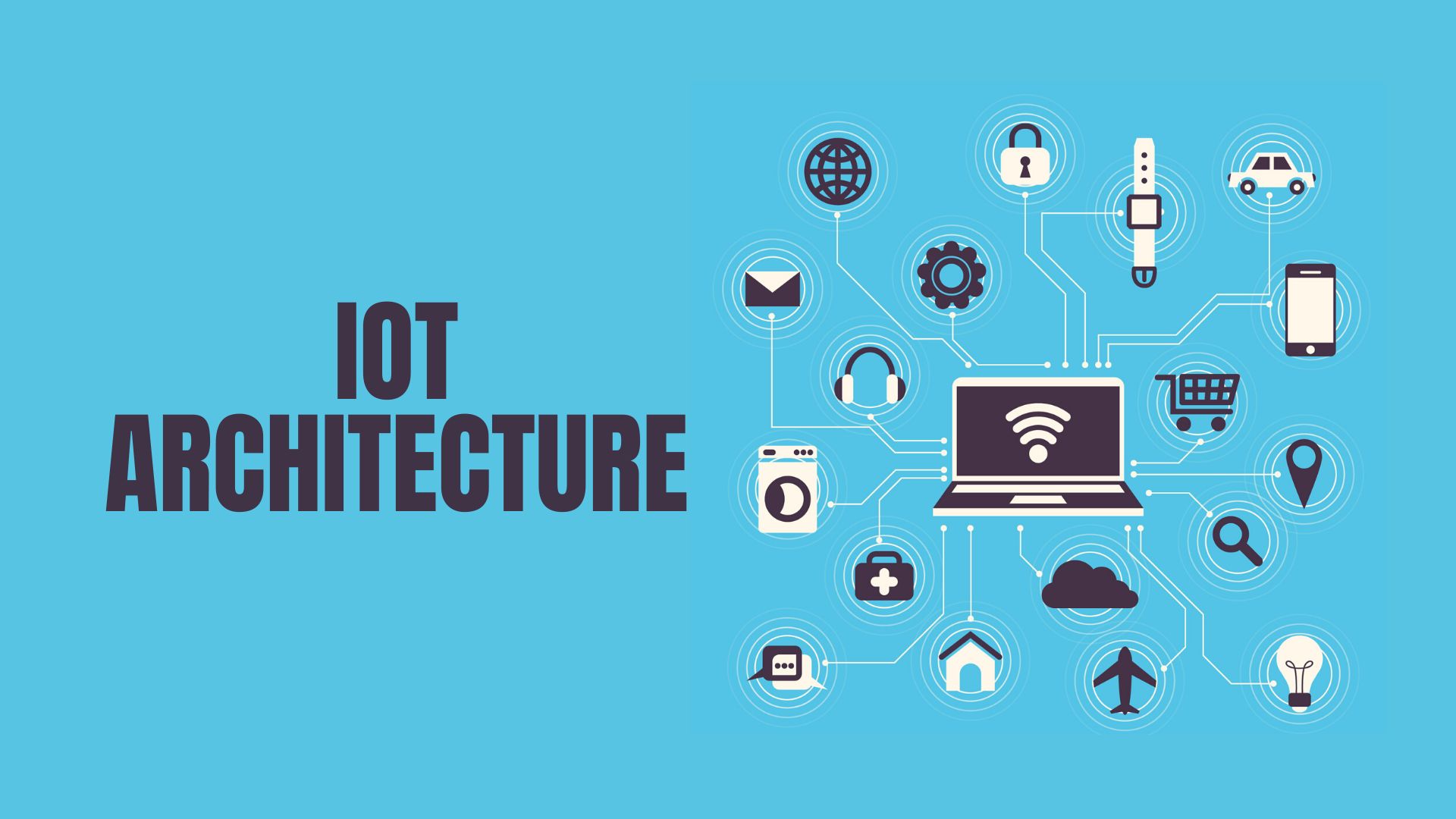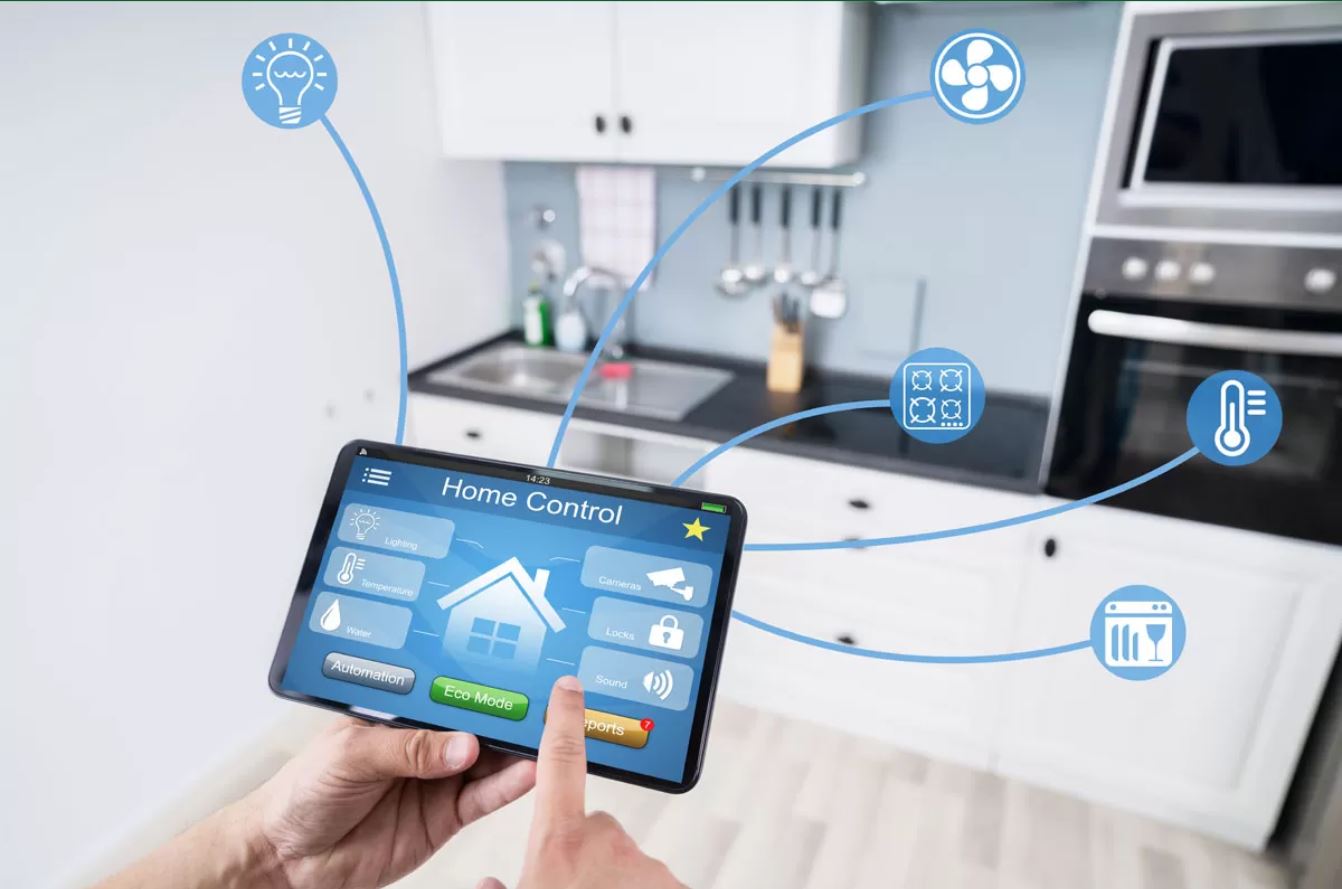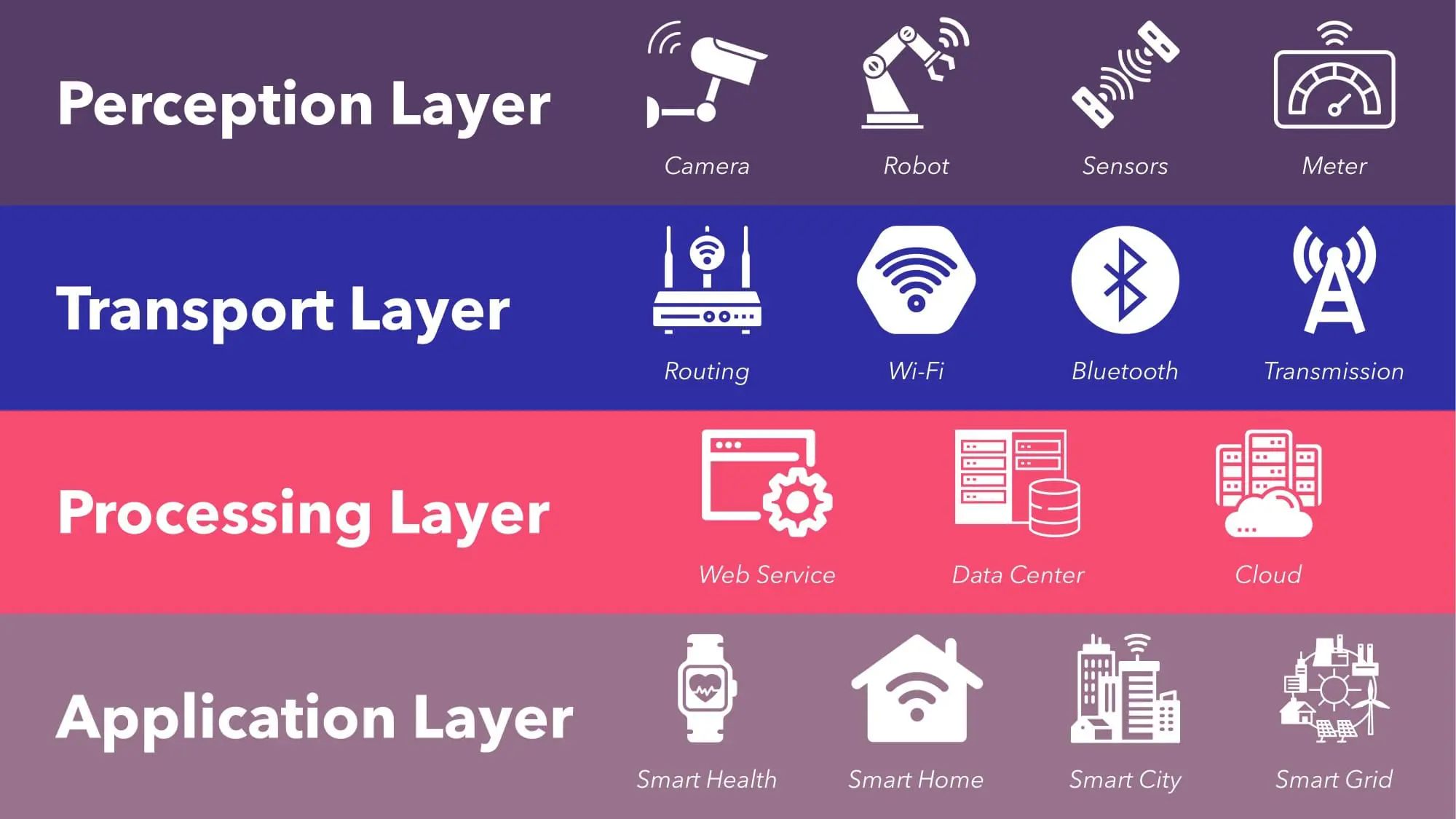Introduction
Imagine a world where everyday devices are interconnected, collecting data from their surroundings and seamlessly communicating with each other. This is the vision of the Internet of Things (IoT), a technology that is revolutionizing various industries and transforming the way we live and work. At the heart of this technological advancement are IoT sensors, tiny devices capable of gathering a vast amount of data.
IoT sensors are deployed in numerous environments, from homes and offices to factories and cities. These sensors are designed to monitor and measure a wide range of parameters such as temperature, humidity, light intensity, motion, and much more. With their ability to continuously collect data in real-time, IoT sensors play a crucial role in enabling data-driven decision-making and automation.
But have you ever wondered what happens to the data collected by these sensors? Where is it stored? How is it processed and analyzed? And what measures are taken to ensure its security and privacy? In this article, we will explore the journey of data gathered by IoT sensors, shedding light on its storage, processing, security, and privacy aspects.
Before delving into the specifics, it is important to understand that the data collected by IoT sensors is instrumental in unlocking valuable insights and facilitating informed decision-making. From optimizing energy consumption in smart buildings to improving transportation efficiency in smart cities, the potential applications of IoT data are vast.
Furthermore, the deployment of IoT sensors and the resulting data collection present exciting opportunities for various industries. Companies can leverage this data to gain a competitive edge, enhance operational efficiency, and create innovative products and services. However, it is essential to address the challenges and considerations associated with IoT data to maximize its benefits.
Now, let’s dive deeper into the world of IoT sensors and explore the journey of the data they gather, from storage and processing to security and privacy protocols.
IoT Sensors: The Data Gatherers
IoT sensors are the backbone of the Internet of Things ecosystem, responsible for collecting vast amounts of data from their surrounding environment. These sensors are designed to detect and measure various physical parameters, transforming them into meaningful insights.
There is a wide array of IoT sensors available, each specialized in capturing specific types of data. For instance, temperature sensors monitor changes in temperature, while humidity sensors measure the moisture content in the air. Light sensors detect light intensity, motion sensors sense movement, and so on.
These sensors come in different forms and sizes, ranging from small and discreet devices to larger, more robust ones. They can be embedded in everyday objects such as thermostats, security cameras, vehicles, and even clothing, making them virtually ubiquitous.
One of the significant advantages of IoT sensors is their ability to collect data in real-time. Unlike traditional data collection methods that rely on manual input or periodic measurements, these sensors provide a continuous stream of data, enabling a more accurate and up-to-date understanding of the environment.
Additionally, IoT sensors are designed to be energy-efficient, ensuring long battery life or even harvesting energy from their surroundings. This feature allows them to operate autonomously for extended periods, reducing maintenance efforts and costs.
The collected data from IoT sensors holds immense value for various applications. In industrial settings, these sensors can monitor the performance of machinery, detect anomalies, and provide predictive maintenance insights. In healthcare, IoT sensors can track patients’ vital signs, manage medication adherence, and enhance remote patient monitoring.
Moreover, in smart cities, IoT sensors are deployed to optimize traffic flow, monitor environmental conditions, and enhance public safety. In agriculture, these sensors assist in precision farming, monitoring soil moisture levels, and optimizing irrigation.
Overall, IoT sensors play a critical role as the data gatherers in the vast IoT network. The data they collect acts as the foundation for informed decision-making, process optimization, and the development of innovative solutions. Understanding the capabilities and potential of IoT sensors is essential for unlocking the power of IoT data.
Where is the Data Stored?
Once IoT sensors collect data from their surroundings, the next question that arises is: where is this data stored? The massive volume of data generated by IoT sensors requires efficient storage solutions to handle and analyze it effectively.
The storage of IoT data can take different forms depending on the specific use case and requirements. There are generally two main options for storing IoT data: local storage and cloud storage.
Local storage refers to the storage of data on the sensor devices themselves or on a local gateway in close proximity. This option is suitable when real-time data processing and analysis are required and when low response times are critical. It allows for quick access to the data without relying on an internet connection.
On the other hand, cloud storage involves storing IoT data on remote servers hosted in data centers. In this model, IoT sensors send the collected data to the cloud for storage and subsequent processing. Cloud storage offers several advantages, including scalability, accessibility, and ease of integration with other cloud-based services.
Cloud storage providers offer various options for storing IoT data, including relational databases, NoSQL databases, and data lakes. Relational databases are suitable for structured data that requires frequent updates and complex queries. NoSQL databases, on the other hand, are more suitable for handling large amounts of unstructured or semi-structured data generated by IoT sensors.
Data lakes provide a centralized repository for storing raw and unprocessed IoT data. They allow for flexible analysis and exploration of the data using various tools and technologies. Data lakes can incorporate both structured and unstructured data, providing a comprehensive storage solution for IoT data.
It is worth mentioning that hybrid storage solutions, combining local and cloud storage, are also gaining popularity. In this approach, IoT data is initially stored locally for real-time processing, and a subset of the data is sent to the cloud for long-term storage and further analysis. This hybrid model ensures both low-latency access to data and the benefits of cloud storage scalability and data processing capabilities.
Regardless of the storage option chosen, data security and privacy should be a top consideration. Adequate security measures and protocols must be implemented to protect the stored IoT data from unauthorized access, data breaches, or tampering.
In the next section, we will explore the data processing and analysis phase, where the collected IoT data is transformed into valuable insights and actionable information.
Data Processing and Analysis
Once IoT data is collected and stored, the next crucial step is processing and analyzing this data to derive meaningful insights and valuable information. The goal is to transform raw data into actionable knowledge that can drive decision-making and optimize processes.
Data processing involves various steps, including data cleaning, integration, transformation, and aggregation. It aims to ensure data quality, consistency, and compatibility for analysis. Data cleaning involves removing noise, outliers, and errors from the collected data, ensuring accuracy and reliability.
Integration combines data from multiple sources, such as different sensors or systems, into a unified format. This step enables holistic analysis and a comprehensive view of the data. Data transformation involves converting data into a suitable format or structure for analysis, such as converting timestamps or units of measurement.
Data aggregation involves summarizing or consolidating data at different levels, such as hourly, daily, or monthly averages, or computing statistical measures to gain insights. Aggregation helps reduce the complexity of analyzing large volumes of data and facilitates a high-level understanding of trends and patterns.
Once the data is processed, it is ready for analysis. Data analysis techniques can vary depending on the nature of the data and the specific objectives. Common analysis methods include descriptive analysis, diagnostic analysis, predictive analysis, and prescriptive analysis.
Descriptive analysis focuses on summarizing and understanding the current state and historical trends of the IoT data. It aims to provide insights into what has happened and enable insights-based decision-making. Diagnostic analysis goes a step further and aims to understand why certain events or patterns occurred by exploring the relationships between variables.
Predictive analysis utilizes statistical models and machine learning algorithms to identify patterns and trends in the IoT data and make predictions about future events or outcomes. It enables proactive decision-making and the ability to anticipate potential issues or opportunities.
Prescriptive analysis takes predictive analysis a step further by not only predicting outcomes but also recommending optimal actions to achieve desired results. It leverages advanced analytics techniques to provide actionable insights and support decision-making.
Data processing and analysis can be performed using a combination of tools, technologies, and platforms. This can range from traditional data processing software and statistical packages to more advanced data analytics platforms and cloud-based services.
The scalability and flexibility of cloud computing provide a robust infrastructure for data processing and analysis at scale. Cloud-based analytics services offer a wide range of tools and frameworks, such as big data processing frameworks, machine learning libraries, and visualization tools, to support efficient and effective IoT data analysis.
In the next section, we will dive into the crucial aspect of security measures for IoT data, ensuring the confidentiality, integrity, and availability of the collected data.
Security Measures for IoT Data
As the collection and utilization of IoT data continue to expand, ensuring the security of this data becomes paramount. IoT devices and the data they generate are vulnerable to various security threats, including unauthorized access, data breaches, and malicious attacks. Implementing robust security measures is essential to protect the confidentiality, integrity, and availability of IoT data.
One of the primary security measures for IoT data is authentication and access control. Each IoT device should be uniquely identifiable and authenticated to prevent unauthorized access. Access control mechanisms, such as role-based access control (RBAC) or attribute-based access control (ABAC), should be implemented to regulate and restrict user access to IoT data.
Data encryption is another crucial security measure. IoT data should be encrypted during transmission and storage to protect it from interception or unauthorized disclosure. Secure communication protocols, such as HTTPS or MQTT with transport layer security (TLS), ensure encrypted communication between IoT devices and data storage systems.
Regular security updates and patches are essential for IoT devices to address known vulnerabilities. Manufacturers and IoT service providers must release timely updates and work closely with users to ensure the devices’ security remains up to date. Additionally, device health monitoring systems can be implemented to detect and notify any anomalies or potential security breaches.
Network segmentation and isolation are effective security measures to prevent potential attackers from moving horizontally within a network. By dividing the IoT network into separate segments and restricting communication between them, the impact of a compromised device can be limited to a specific segment instead of affecting the entire network.
Implementing intrusion detection and prevention systems (IDPS) can help identify and mitigate potential threats. These systems monitor network traffic and analyze patterns and behaviors to detect any suspicious activities or anomalies. They can then trigger alerts or take automated actions to mitigate the possible risks.
Physical security measures should also be considered to protect IoT devices from unauthorized physical access. This includes measures such as tamper-proofing devices, installing security cameras or alarms, and securing access to areas where IoT devices are deployed.
Regular backups of IoT data ensure that data can be recovered in the event of a security incident or data loss. It is essential to have robust data backup and recovery strategies in place to minimize the impact of potential data breaches or system failures.
Finally, continuous monitoring and auditing of IoT systems are crucial to detect and respond to any security incidents effectively. Monitoring includes real-time monitoring of network traffic, device activity logs, and system performance. Regular audits help identify any configuration weaknesses, policy violations, or non-compliance issues.
By implementing these security measures, organizations can enhance the protection of IoT data, mitigate risks, and ensure the integrity and availability of the collected data. However, as IoT technology continues to evolve, it’s crucial to stay proactive and keep up with emerging security threats and best practices.
Data Privacy and Legal Considerations
When it comes to IoT data, ensuring data privacy and complying with legal requirements are essential to maintain trust and protect individuals’ rights. IoT devices collect a vast amount of personal and sensitive data, making it crucial to establish robust privacy measures and adhere to relevant regulations.
Data anonymization and pseudonymization techniques are commonly used to protect individuals’ privacy. Anonymization involves removing or encrypting personal identifiers from the data, making it impossible to identify individuals directly. Pseudonymization replaces the identifiers with pseudonyms, allowing for data analysis while preserving individuals’ privacy.
Transparency is a fundamental principle in data privacy. Individuals should be informed about the types of data collected, the purposes of data processing, and the entities with whom the data may be shared. This information should be communicated through clear and concise privacy policies and consent forms, providing individuals with the opportunity to make informed decisions about their data.
Consent plays a critical role in IoT data privacy. Organizations should obtain explicit and informed consent from individuals before collecting and processing their personal data. Consent should be specific, freely given, and easily withdrawable. Additionally, organizations should keep records of consent provided by individuals as proof of compliance.
Complying with relevant data protection regulations, such as the General Data Protection Regulation (GDPR) in the European Union, is crucial. These regulations set out specific requirements for the collection, processing, storage, and sharing of personal data. Organizations should ensure they have appropriate data protection policies and procedures in place to meet these legal obligations.
Data minimization is another important consideration for data privacy. Organizations should only collect and retain the minimum amount of data necessary to achieve the intended purpose. Unnecessary data should be promptly deleted or anonymized to reduce the risk of privacy breaches.
Secure data transfer and storage are critical for maintaining data privacy. Organizations should implement encryption, secure communication protocols, and robust access control mechanisms to protect IoT data in transit and at rest. Regular security audits and assessments should also be conducted to identify and address any vulnerabilities or risks.
In the event of a data breach, organizations should have well-defined incident response plans to minimize the impact on individuals’ privacy. This includes notifying affected individuals, regulatory authorities, and taking appropriate measures to remediate the breach and prevent future incidents.
It is crucial for organizations to stay updated with evolving privacy laws and regulations. This includes staying informed about changes in data protection regulations and guidelines issued by regulatory authorities. Conducting privacy impact assessments can help identify, evaluate, and mitigate risks to individuals’ privacy before implementing new IoT systems or processes.
By prioritizing data privacy and adhering to legal considerations, organizations can establish a foundation of trust with individuals and ensure that IoT data is collected, processed, and stored in a manner that respects privacy rights and obligations.
Data Monetization Opportunities
The abundance of data collected by IoT sensors presents organizations with significant opportunities for data monetization. By leveraging the insights derived from IoT data, organizations can create new revenue streams, optimize operations, and drive innovation. Here are some key data monetization opportunities:
1. Value-added services: Organizations can use IoT data to develop and offer value-added services to their customers. For example, a fitness tracker company can provide personalized health and wellness recommendations based on the user’s activity data collected by the IoT device.
2. Data analytics and insights: Organizations can extract valuable insights from IoT data and offer data analytics services to other businesses. Data analytics can help companies in various industries make informed decisions, optimize processes, and improve customer experiences.
3. Product enhancements and customization: IoT data can be used to enhance existing products by incorporating user preferences and behavior patterns. This allows organizations to offer personalized and tailored experiences to their customers, ultimately increasing customer satisfaction and loyalty.
4. Predictive maintenance: IoT data can be analyzed to predict equipment failures or maintenance needs. This enables organizations to offer predictive maintenance services to their customers, reducing downtime, and optimizing maintenance schedules.
5. Data licensing and partnerships: Organizations can monetize their IoT data by licensing it to other companies for research, analysis, or product development purposes. Forming partnerships with data-driven organizations can also create revenue-sharing opportunities.
6. Advertising and marketing: IoT data can be used for targeted advertising and marketing campaigns. By analyzing user behavior and preferences, organizations can deliver personalized advertisements and promotions, increasing the effectiveness of marketing efforts.
7. Smart city initiatives: Municipalities can leverage IoT data to improve urban planning, optimize resource allocation, and enhance citizen services. Data monetization models can be explored through public-private partnerships, where organizations can provide data-driven solutions to address urban challenges.
8. Insurance and risk management: IoT data can be utilized by insurance companies to assess risk profiles and develop personalized insurance products. For example, auto insurers can offer usage-based insurance, where premiums are based on actual driving behavior captured by IoT devices installed in vehicles.
9. Energy optimization: IoT data can be harnessed to optimize energy consumption in buildings and industries. Energy management companies can use this data to identify areas of improvement, implement energy-saving measures, and offer energy efficiency consulting services.
10. Data marketplaces: Organizations can create data marketplaces where IoT data can be bought and sold by various stakeholders. This enables data providers to monetize their data assets and allows data consumers to access and utilize valuable IoT data for their own purposes.
As data becomes increasingly valuable, organizations need to ensure they have strong data governance practices in place, including data quality control, privacy protections, and compliance with relevant regulations. By harnessing the monetization potential of IoT data responsibly, organizations can unlock new avenues for growth and innovation.
The Future of IoT Data
The future of IoT data is poised to be even more transformative as technology advancements continue to unfold. Here are some key trends and directions that will shape the future of IoT data:
1. Edge computing: Edge computing is becoming increasingly important in IoT data processing. By performing data processing and analysis at the edge devices themselves, organizations can reduce latency, optimize bandwidth usage, and enhance real-time decision-making capabilities.
2. Artificial Intelligence and Machine Learning: AI and ML technologies will play a significant role in unlocking the full potential of IoT data. These technologies enable more advanced analytics, predictive capabilities, and automation, resulting in smarter and more autonomous IoT systems.
3. Interoperability and standards: As the IoT ecosystem continues to expand, interoperability and standards will become crucial. Efforts to establish common protocols, data formats, and interoperability frameworks will enable seamless integration and collaboration across different IoT platforms and devices.
4. Privacy-preserving techniques: With increased concerns about data privacy, the future of IoT data will see a growing emphasis on privacy-preserving techniques. Technologies such as differential privacy, federated learning, and secure multiparty computation will be employed to enhance privacy while still allowing for valuable data analysis.
5. 5G networks: The deployment of 5G networks will revolutionize IoT data transmission and connectivity. With significantly faster network speeds, lower latency, and increased capacity, 5G will enable more real-time data exchange, support a higher density of connected devices, and unlock new IoT applications.
6. Blockchain technology: Blockchain technology holds promise for enhancing the security, integrity, and transparency of IoT data. It can provide a decentralized and tamper-proof ledger for recording and verifying IoT data transactions, ensuring data authenticity and improving trust in the ecosystem.
7. Data as a service: Data as a service (DaaS) models will become more prevalent, where organizations can monetize their IoT data by offering it as a service to other businesses. DaaS platforms will facilitate the secure exchange and integration of IoT data across different industries and applications.
8. Edge AI and Intelligent IoT: The convergence of AI and IoT will give rise to intelligent IoT systems that can make autonomous decisions and respond in real-time. Edge AI will enable IoT devices to process and analyze data locally, making quick decisions and taking appropriate actions without relying on cloud connectivity.
9. Ethical considerations: Ethical considerations will become increasingly important as the use of IoT data expands. Organizations and policymakers will need to address issues such as data ownership, consent, transparency, and the responsible use of IoT data to ensure fair and equitable outcomes.
10. Industry-specific applications: IoT data will continue to drive industry-specific innovations across various sectors, including healthcare, agriculture, transportation, manufacturing, and energy. Customized IoT solutions will emerge to address specific industry challenges and improve efficiency, sustainability, and quality of life.
The future of IoT data holds immense potential for innovation, economic growth, and societal benefits. As organizations navigate this evolving landscape, it will be crucial to prioritize data security, privacy, and ethical considerations to build trust and leverage the full potential of IoT data for a connected and intelligent future.







